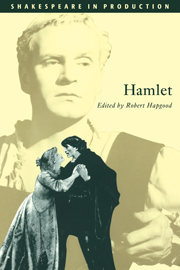Just as Shakespeare's characters in a given play tend to use the same words and images, they also tend to use the same ‘modes’ of speech. For instance, Hamlet, one of the few plays in which this characteristic has been noted, is full of questions. Not all of its speeches take the form of questions, of course, or even most of them; nor is questioning the play's only recurring mode of speech, may of the characters being equally inclined toward lengthy admonition. Yet the ‘interrogative mood’ the questions create does make a contribution of thematic importance to the tone and meaning of the play. The same can be said, I believe, of comparable modes of speech in many – perhaps all – of Shakespeare's plays. As a start toward testing this belief, I should like to look at Richard II, 1 Henry IV, 2 Henry IV, and Henry V.
The central mode of speech in Richard II is that of denunciation. Of the four plays, this is the only one which draws its modes to a large extent from its sources. For the most part, Shakespeare intensifies the denunciations he finds in Hall and Holinshed. Where, for instance, in Holinshed York simply ‘delivered the indenture’ to the king which exposed his son's plot, in the play he inveighs repeatedly against the ‘villain’ and ‘traitor’ (5.2. and iii).
